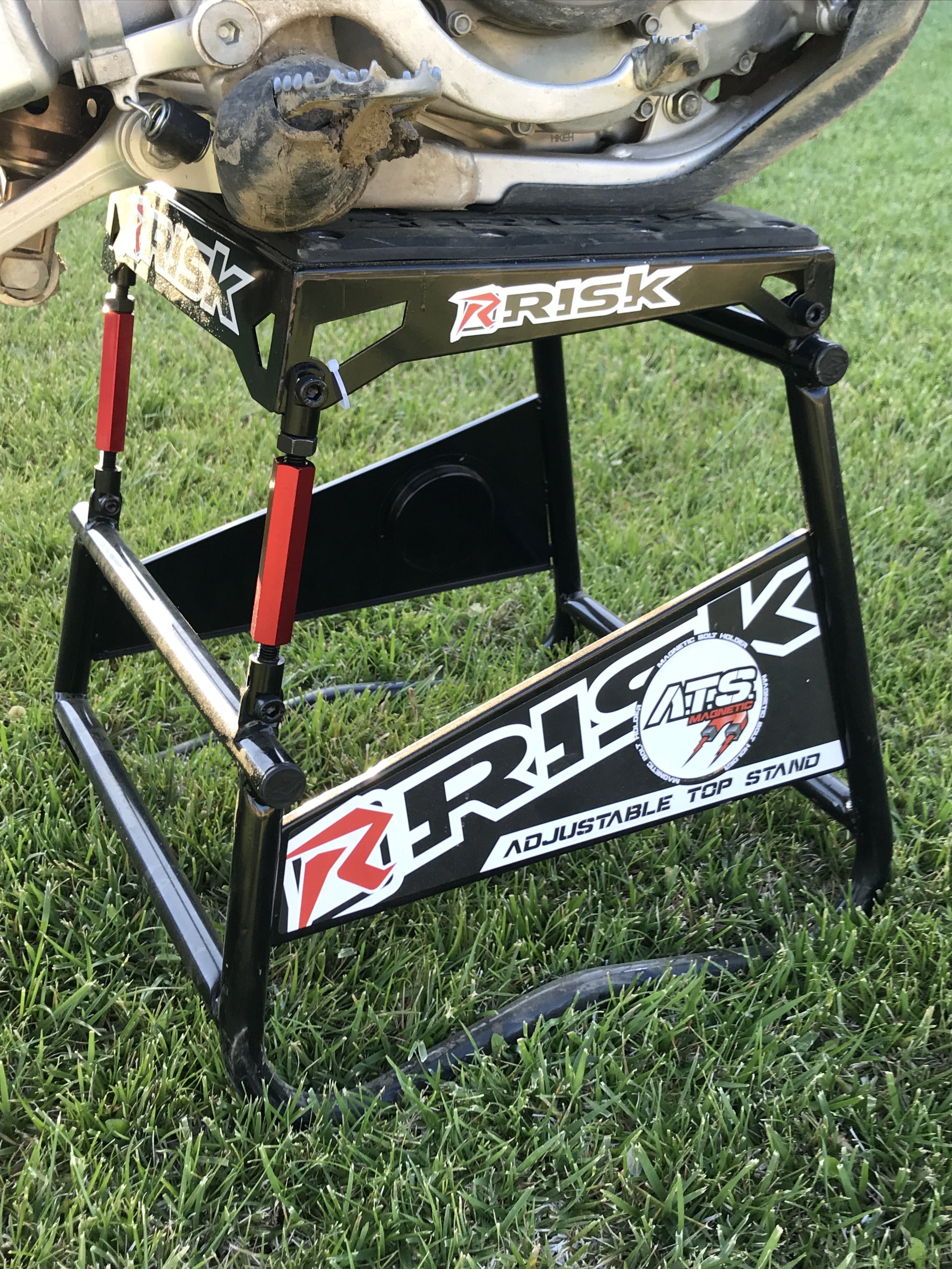I have used the Garmin 910XT for years to keep track of my training, my lap times, and my heart rate, but Garmin has since discontinued my favorite training helper. The Garmin 910XT was bulky, but it was tough, accurate, and had an auto lap feature that was triggered “by position”, which comes in very handy to any motocross rider. I scoured the internet looking for a sports watch that had this feature, among others that I required, but came up empty handed. Heather sat around the house for months and listened to me bitch and complain about not having someone time my laps at the track, so she insisted that I find another watch ASAP. I decided on the Garmin Forerunner 935 because it had an auto lap feature as well as other important aspects that I needed being that I am a dirt bike rider and not just a runner, swimmer or cyclist. Below are some of the aspects of the watch the I have noticed while living with it for a few months.
The top-end Garmin Forerunner model has always been something of a bulky watch, stretching all the way back to the hefty days of my favorite Forerunner, the 910XT. I tried the 920XT, but quickly found out that it didn't have an auto lap feature, which made me pissed. It wasn't until the Forerunner 220 that things really started to feel slim, but even then I still couldn't get an auto lap feature.
This leads me to the Forerunner 935, which effectively replaces the 920XT at the top of the Forerunner line and although it drops the XT branding, it’s still a fully-featured multi-sport device. The Forerunner 935's design, as compared to other Forerunner products is where the biggest shift is for this device. The influence of the parallel Fenix family can be clearly seen here, as the 935 is more like a watch and less like a small TV that was the 920XT. The Forerunner 935 has a plastic body, which is one area where it differs from the Fenix 5, which uses materials like stainless steel to enhance the protection further, but I have abused this watch for months and have yet to have a crack in the screen or bust a button. The 935 is waterproof to 5 ATM, so it's going to be happy with your water sports, mud, or when you're power washing your bike, and of course is packed with swimming functions as a result. I am not a swimmer, so I haven't tested these features, but I thought it was worth mentioning.
There's a 22mm silicone band, so you can choose to switch bands if you want, otherwise the watch comes with a black body and either a black or yellow strap. The silicone band is nice and comfortable while riding and more pliable than the 920XT bands. There's enough flex in the band to let it stretch a little to remain comfortable in longer motos. Like other Forerunner devices, the 935 has buttons to the left and right of the body and no touchscreen. We like this arrangement because it's easier to manage using buttons, rather than vague swipes while you're trying to ride with gloves. These buttons are metal too, so there's a premium feel in use and not some cheap plastic buttons that end up sticking up with mud over time. Not to mention it’s super easy to feel with gloves on as well.
The GPS and wrist-based heart-rate monitoring (as well as compatibility with Garmin chest straps if you prefer) provide the basics for activity tracking, but with those extra sensors giving you a lot more data. Compared to the 735XT, it's the addition of the barometric altimeter, gyroscope, and thermometer that offers more hardware features.
Of these it's the altimeter that probably gives you the more interesting data, because it's that which enables 3D distance and speed, and accurate changes in elevation. For those like to cycle like me, elevation change becomes all the more useful than those just cycling flat roads. trail rider will also find the altimeter useful on longer trail rides. You have the option to turn 3D distance on or off, depending on your preferences. There's also Wi-Fi in this watch which will allow you to sync to the Garmin Connect App through a friendly Wi-Fi network without a phone. The Garmin Connect App is an awesome feature to have on your phone to view your laps on the way home or while sitting in the pits. Simply download your last activity to your Garmin Connect and view your progress throughout the day.
In addition to the sensors built into the watch, there's also full support for external sensors. I’ve mentioned the heart-rate chest strap, so I paired the 935 with an old strap for fun, to see if it worked (one from my 910XT) on the bike and it had no problem feeding in the data. So don’t throw away your old Garmin strap, just in case you lose your current one, which I have already done! There's full 24/7 activity tracking, monitoring your rest, which I love because I can track how much sleep I’m getting and if I am recovered from the previous day’s activities. Recovery is as important to me as lap times are because I ride so much I need to focus on my sleep patterns.
The option to use the chest strap is something I almost always do when riding/training, but to see if the sensors on the backside of the watch were accurate I did back to back motos to see if my heart rate drastically changed and to my surprise, the sensors on the 935 were amazingly accurate without the strap. Using the heart-rate strap however is necessary to unlock the heart rate variability function, designed to measure your stress levels, which works well enough as an additional measure of your general wellbeing. Maybe you do need to take time off work and take that vacation!
Course creation is really good (including elevation and the option to add average speed information so you know how long it will take) and well worth it for those trail riders heading out on long rides. If you're like me and are the person who wants to ride a route that draws a rude picture, then this is the watch to do it!
Training status is one of the off the bike features that I like on the 935. Because I am a self motivated person, the idea that the watch can tell you what progress you're making, as well as guide you in hitting the right level of exercise, makes it easier not having to spend a crap ton of money on a trainer that yells at you everyday. The 935 looks at your training load and alerts you if you're training too much (most likely resulting in you getting sick and the having to stop for a week to get over it), or if you're getting it right. If you stop training, the 935 will politely tell you that you're losing fitness. If that doesn't get you out the door and of your ass, then nothing will. The 935 does all of this by calculating your stats and set against baseline data (I am assuming).
I also like the recovery measure, which tells you it will take, say, 48 hours to get over that epic mountain bike ride or motos you put in at the track. Again, it's data drawn from averages and won't suit those who are really fit, but it's a good general guide and a reminder that rest days are a hugely important part of any structured training program.'
You can also measure/estimate lactate threshold and VO2 Max without the need for a sports science lab. These performance measures are gathered from data that the 935 is being collected and even if they aren't spot on (they're algorithmically calculated from averages), you can at least aim to improve those scores and use that as a measure stick of your increasing fitness.
The biggest failing that I have come across on so called smart watches is battery life. If you can get two days from an Apple watch you've done well. Let's just say that the Forerunner 935 laughs in the face of any other smart watches out there, easily surpassing the endurance of anything from Apple or Android/Wear OS. The 935 lasts me easily over a week without a charge, while using all of its features daily. Being able see who is calling me as well as reading texts on my phone is just another convenient feature of the 935 that makes me want to wear it 24/7.
On The Track:
The 935 doesn't have the auto lap feature “by position” that I would want for motocross, but has auto lap “by distance”. In order to get correct lap times with this feature you will have to start your watch at the furthest point of the track (so that the GPS logger doesn't double back on itself) and GPS/measure one complete lap in order to see how long one lap is. Once you figure out how long the track is you must go back into your bike settings on the 935 and change the mileage in your auto lap data field. Once this is set, your 935 will keep track of each lap for you. It’s a little more of a pain in the ass than the “by position” feature, but at least I have the auto lap function and I can view my progress per session. I am not going to bitch too hard about this. It’s not exact, but it’s damn close.
I have customized my data fields so I am able to check my last lap time in the air. With each passing lap your watch will vibrate and then your lap time will pop up within 2-3 seconds of the triggered area. That lap will remain on the screen until the next lap. The watch face and its numbers are large enough for my old ass to read, so I am sure it will be bold enough for most of you out there. I also like that the 935’s heart rate monitor doesn't get interfered with the harmonics of the motorcycle while I'm riding like some of the other sports watches/heart rate monitors that I have worn.
This is the first watch that I have actually worn all day every day. I like that it’s waterproof so it’s easy to clean as I can simply take it in the jacuzzi with me and boom! All clean! I paid $499.99 for the Garmin 935 Forerunner tri-bundle (with heart rate strap) and so far I have been happy with my purchase. It’s a watch that I wear everyday, doesn't look bulky, isn't heavy, and can do 99% of what I am asking it to do. If it had the “by position” auto lap feature this would be a review that I would give an A+, but I will instead give a solid A.
Specs:
47 x 47 x 13.9mm; 49g
Plastic body and strap
22mm silicone band
5 ATM waterproofing
Wrist-based heart-rate monitor (HRM)
1.2-inch color display, 240 x 240 pixel resolution
GPS, Altimeter, Compass, Gyroscope, Thermometer












